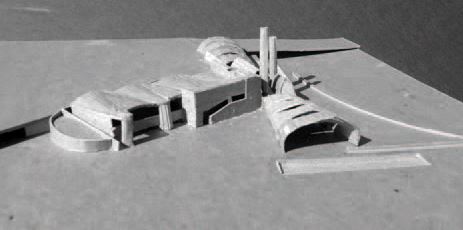Brick Making Factory
Tanzania, East Africa
Undergraduate PortfolioDetail Studies
Building on the work of the initial spatial and detail studies, I looked at brick roof forms. Roofs of brick are uncommon in Morogoro, despite the need for better roofing materials and the prevalence and low cost of brick. My next series of studies considered this problem as the starting point, working from there towards the established spatial and operational requirements.
The Roofscape
Roofs are especially problematic in the informal sector. A majority of the building expense is in the roofing, on corrugated metal. The main issue is striking a balance between cost and safety. The only other viable and cheaper solution used with any prevalence is traditional makuti, a roofing made from either reeds or palm fronds. Although this alternative is indeed cheaper, it must be continuously maintained and is susceptible to fire. Brick has been ised as a roofing material for centuries. It requires two conditions: a low labor cost and a highly skilled workforce.
 Initial Sketch of Final Scheme
Initial Sketch of Final Scheme Chipboard Study Model
Chipboard Study ModelIn researching precedents brick roofing, I studied the use of brick in the construction of shells in the Visitors’ Center at the Mapungubwe National Park in South Africa, a project by the architect Peter Rich. Although the project used stabilized earth blocks as opposed to burned bricks, the method of laminating several layers of block together to create the shell is applicable to burned brick as well.
Perhaps the most elegant use of the technique as it pertains specifically to burned brick is found in the work of Eladio Dieste, the Uruguayan engineer. That a large part of Dieste’s work was devoted to humble spaces, grain storage, warehouses, basket ball courts, is a testament to the economics of this building technique in the right context. Morogoro is such a context for its low cost of labor, the availability of material, and a rapidly expanding municipality which will need buildings of increasingly larger scales.
 Section
Section
Section